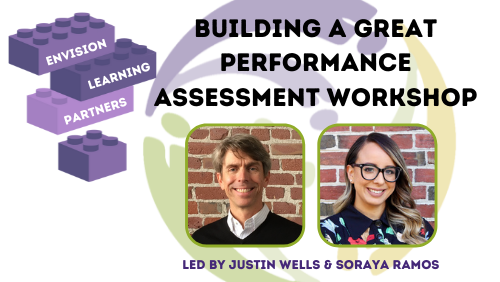From Good to Great: 5 Elements to Revamp Your Assessments
Topics

Educators are rethinking the purposes, forms, and nature of assessment. Beyond testing mastery of traditional content knowledge—an essential task, but not nearly sufficient—educators are designing assessment for learning as an integral part of the learning process.
Educators can make their assessments great using the five principles of High Quality Performance Assessment (HQPA).
There’s a difference between good and great assessments. On the one hand, good assessments can be fun and provide opportunities for creativity and collaboration. In fact, many of us have keen memories of fun projects that tapped into our creativity during our K-12 education. One that comes to mind is my second grade animal report on the wonders of racoons. I distinctly remember conducting research, organizing information on a graphic organizer, and presenting my findings to the class. Overall, the animal project was good in that I practiced communication and research skills (especially as an English Language Learner), but it wasn’t necessarily great. There were some missing pieces that could’ve taken this task to the next level.

Courtesy of the author
The following High Quality Performance Assessment (HQPA) principles were created by our team at Envision Learning Partners (ELP) as guidance for creating high quality assessments.
- Elicit evidence of learning that matters - Great assessments measure skills that matter in the real world, meaning that they’re complex and transferable to many postsecondary pursuits.
- Tight on its criteria for success - Great assessments don’t hide the ball from students. A well-designed task is clear about what skills and knowledge it measures, both in the challenge students must complete as well as the criteria used for evaluation.
- Open to different learner approaches - Great assessments promote divergent thinking and result in original student products and/or solutions. Students are expected to take charge of their learning by expressing themselves and deciding their process and/or product.
- Authentic - Great assessments engage students in real work in the real world, both in the assessments and the learning journey. Students offer solutions to real problems and make a real contribution to people who need it.
- Learning experience in and of itself - Great assessments offer opportunities for learners to see how they have grown through metacognitive reflection; learners also gain feedback for continuous improvement.
Download our HQPA Resource Slides for more details.
HQPA is a helpful framing in assessment design because it helps us pinpoint both the strengths and areas of growth of our assessments. The aim is not to fulfill all of the criteria in every single task but more so to inspire conversation for feedback and iteration. In the case of my second grade racoon project, I think it would fulfill much of this criteria. I got to choose an animal and showcase my learning of skills that matter in the real world. An area of growth for the task, however, is related to its complexity; the task could easily have elicited skills that matter even more. In addition to reporting factual information, the task could improve by challenging students to analyze or evaluate their research findings: How are racoons different from other animals in the neighborhood? Can racoons serve as pets, why or why not? These are a few questions that could potentially push student thinking beyond the recall phase of learning.
Overall, HQPA is a useful tool in the iterative cycle of assessment design. In some schools, teacher teams use the criteria as a checklist and discuss how an assessment meets each of the elements. The process is similar to a tuning protocol where a team reviews the materials, asks clarifying questions, and discusses how each of the criteria shows up in the assessment. The protocol is thorough (50-60 minutes) and results in rich discussions and feedback. When time is a scarce resource, teams focus on one or two elements instead. Sometimes we need to start small before we attempt to tackle all HQPA elements. We may never reach a final assessment draft but that’s the beauty of learning—we’re constantly engaging in the process of design, implementation, and reflection.
If you're interested in taking your assessments from good to great, you can go through the same process I just did with my racoon project. Consider each of the five principles and how they can be used to strengthen your assessment design. And if you want to design a task that is ready to implement in your classroom by applying the principles of high quality performance assessment with support from ELP, we are offering a three-part virtual workshop, Building a Great Performance Assessment, February 16, February 23, and March 2. Visit the event page for more details and to register.
All students deserve to experience great assessments. They deserve to be seen as whole human beings who are able to showcase their brilliance, and HQPA is a helpful framework in our pursuit of these great assessments.





